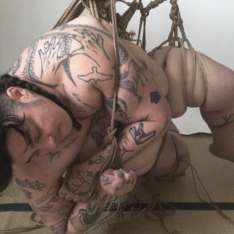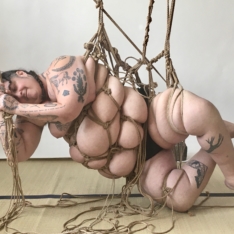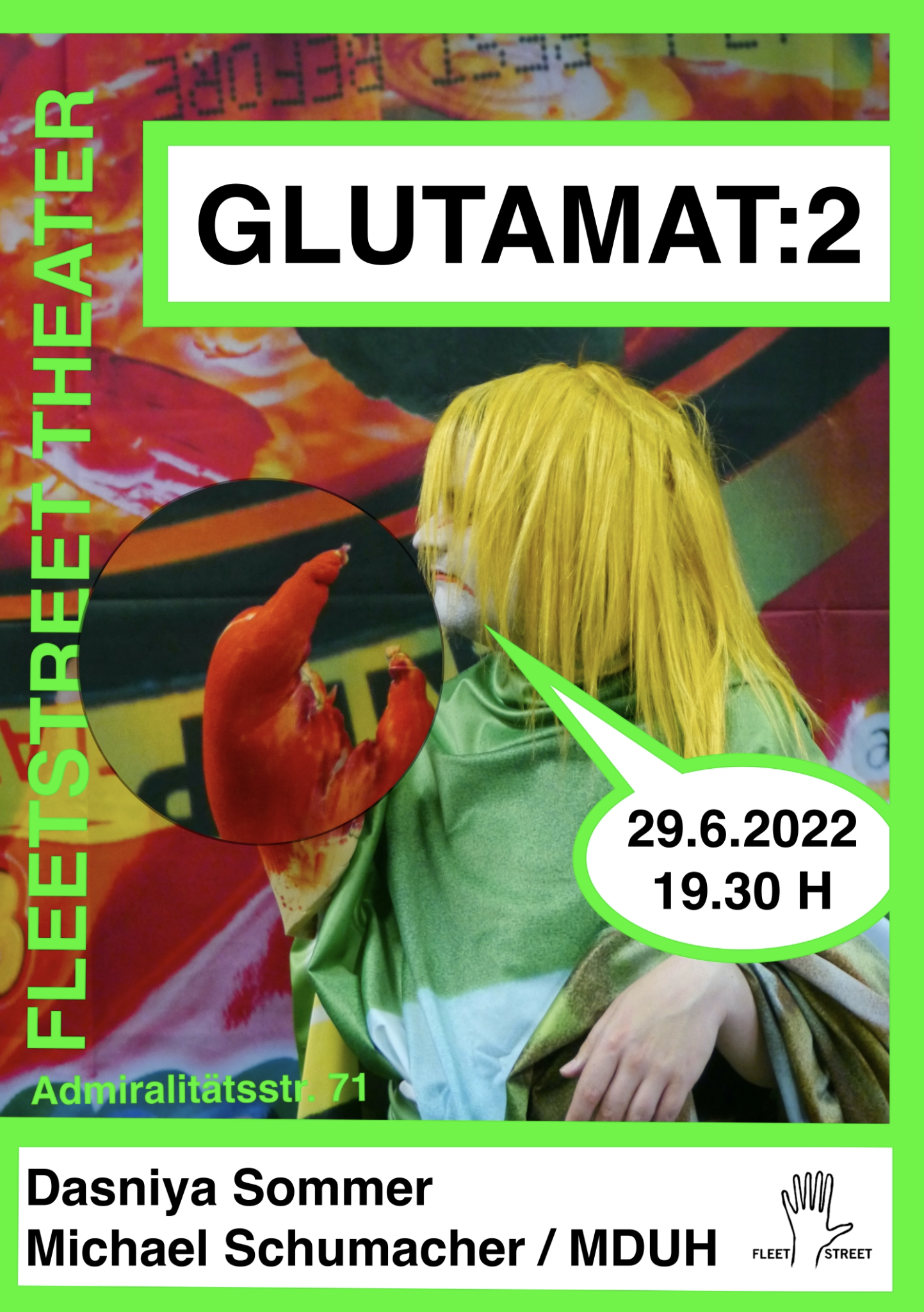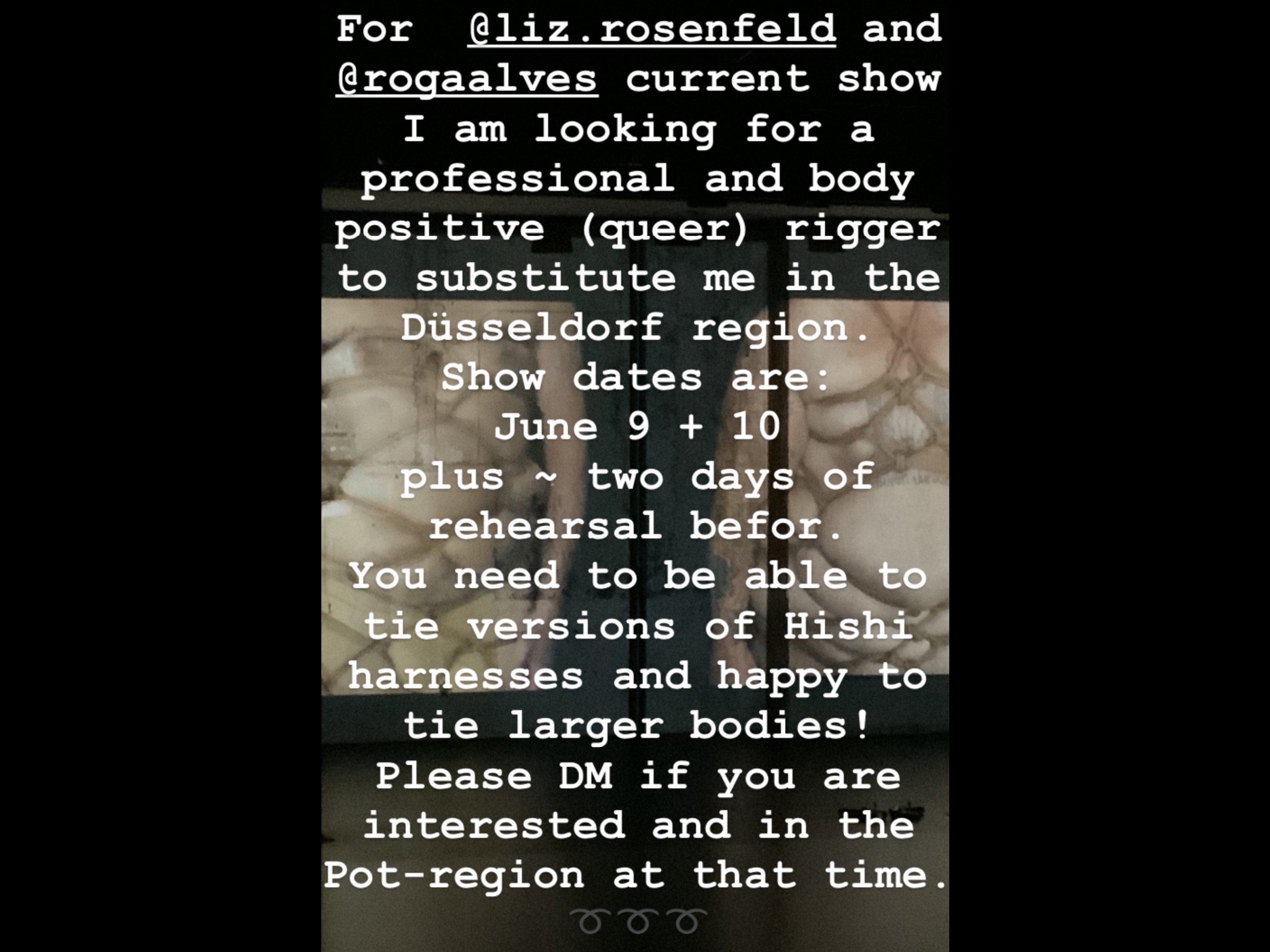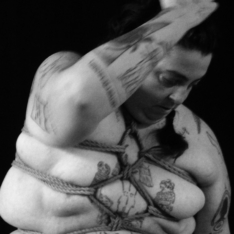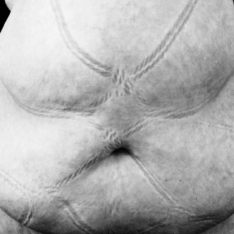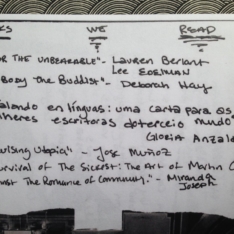
Tomorrow Friday on Instagram at Dasniya_Sommer – February 26, 4pm
Rope Barre‘ starts with a shoulder blade warm up. With ‚Musculus Subscapularis‘, one of the deep shoulder and breast muscles. Running between the front part of the blade to the upper arm where it inserts on the very inside. When the arm is turned in or pushed against the torso, like when it is freezing or the soul is tensing up, it‘s this M. Subscapularis which get’s active.
Personally both of mine have been injured for a few years. With the arm positions in ballet, with pulling up weights in bondage, or with the arms cross tied behind the back it’s the tendons of this muscle which can get inflamed. (Like to say here that this is not necessarily the ‚fault‘ of the practices, but rather how it’s done and taught.) Nevertheless both ballet and bondage are radical in terms of anatomical intensity (and perhaps from other perspectives). Doing both extensively I see it as the collateral damage of professional ‚use‘ of my body. Nevertheless the price is high. DisTanzenSolo currently supports me to take care of many old dance injuries and at the same time develop a gentle choreographic training routine without production pressure.
This month focus is on developing a somatic strength training for the scapula and it‘s surrounding structures, a not so tiny part of the arm. And because it‘s invisible for our forward looking species I am rediscovering it’s minor movement by sensing it’s location to start with. Inspired by the manual therapeutic practice ‚PNF‘, which I learned about in my physio therapie training more than 15 years ago. I had forgotten about it, but my shoulder misery led me to integrate it in my current daily training and movement research. ‚PNF‘ means proprioceptive-neuro-fascilitation. Kind of an anatomical self-sensing skill, which most people on the planet use navigating through space. If functioning, this sense tells the mover in which position their joints are. So that also in the dark we know our physical positioning in time and space. That’s the neuro-wiring between the joint capsule- and skin tension, and the brainy part – that‘s how I roughly remember. A pretty awesome and complex sense, which is used mostly without thinking.
For the shoulder blade warm up it‘s necessary to relay on this tactile sense. It’s especially trained in dance and other high coordination sports. But I find the scapula gets often neglected (especially in more conventional classical training), cause it‘s not an obvious articulation like hip or shoulder, and from the old days it‘s all about ‚Isolation‘.
After warming the blade up the routine of a ballet barre follows. The barre is almost an institution by itself I find. A ritual, a codified and useful object, and therefor it’s replaced by ropes. An experimental ‚barre‘ with impromptus steps. Requiring the shoulder girdle to stabilise the arms. For the moment there are no fixed sequences, the guts pour out steps by heart.
The wrist rope make sensible (fühlbar) how the upper limb connects to the blade in the back. From there letting your creative part of the brain take over. Playing with partial restriction. Going back to floor level. Don‘t pull strongly, rather use ropes holding your wrists to push (thrust) down and move rather slow than fast.
There are lot‘s of bridges between, ballet inspired impulses and bondage somatics. Let‘s not hunt shapes! But rather going through them and staying on a sensing level while breathing. And than, once in a while letting go of the concentration part and the muscle support, so that weight is actually falling into ropes or towards the floor. Integrating inner imagery and emo moments can be fun. If you hover over them for a while they might transform, intensify or go away. Think it‘s all valid on an experience level (without forceful phantasies for this round.)
Undoing the ropes can be a moment by itself. Same here, taking the inner drive into the action. Gently, exhausted or wild are colours of mind sets which inform the action/movement quality.
This is my current ‚freeing the shoulder blade and connecting back to my upper limb spirits!‘ tutorial.
Tomorrow Friday on Instagram at Dasniya_Sommer – February 26, 4pm
Trailer: Rope Barre – DisTanzenSolo
„Gefördert durch die Beauftragte der Bundesregierung für Kultur und Medien im Programm NEUSTART KULTUR, [Hilfsprogramm DIS-TANZEN/ tanz:digital/ DIS-TANZ-START] des Dachverband Tanz Deutschland.“






